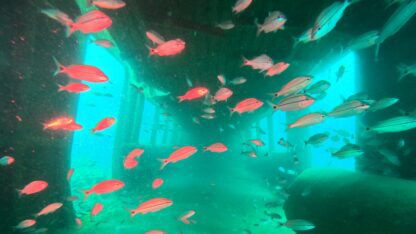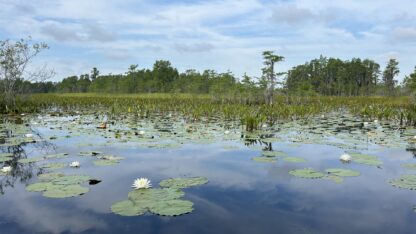This coverage is made possible through a partnership between WABE and Grist, a nonprofit environmental media organization.
The population of North Atlantic right whales increased slightly in 2023, according to the latest estimate from scientists, released Tuesday – rare good news for the critically endangered whales that give birth off Georgia’s coast. But the species is still in trouble.
The North Atlantic Right Whale Consortium, which releases population numbers for the prior year each fall, estimates there were 372 of the whales in 2023, continuing a three-year trend of minor population increases. Scientists say that’s encouraging after years of steep declines.
But numbers show that right whales are in the midst of a bad year. Nine have died in 2024 so far, and human activities have injured at least 13.
“It highlights the vulnerability of this species that, with so few individual animals, with so few reproductive females, it really doesn’t take much – a few more mortalities, a few more injuries that prevent reproduction to turn that population estimate down again,” said Heather Pettis, a research scientist at the New England Aquarium, which tracks the whale population.

The leading causes of right whale death and injury are fishing lines and boat strikes. Whale scientists and advocates are pushing for tighter regulations to protect them. A federal rule enhancing vessel speed restrictions has been introduced, and discussions and research are ongoing on measures to reduce use of the kind of fishing lines that pose the greatest risks to right whales.








